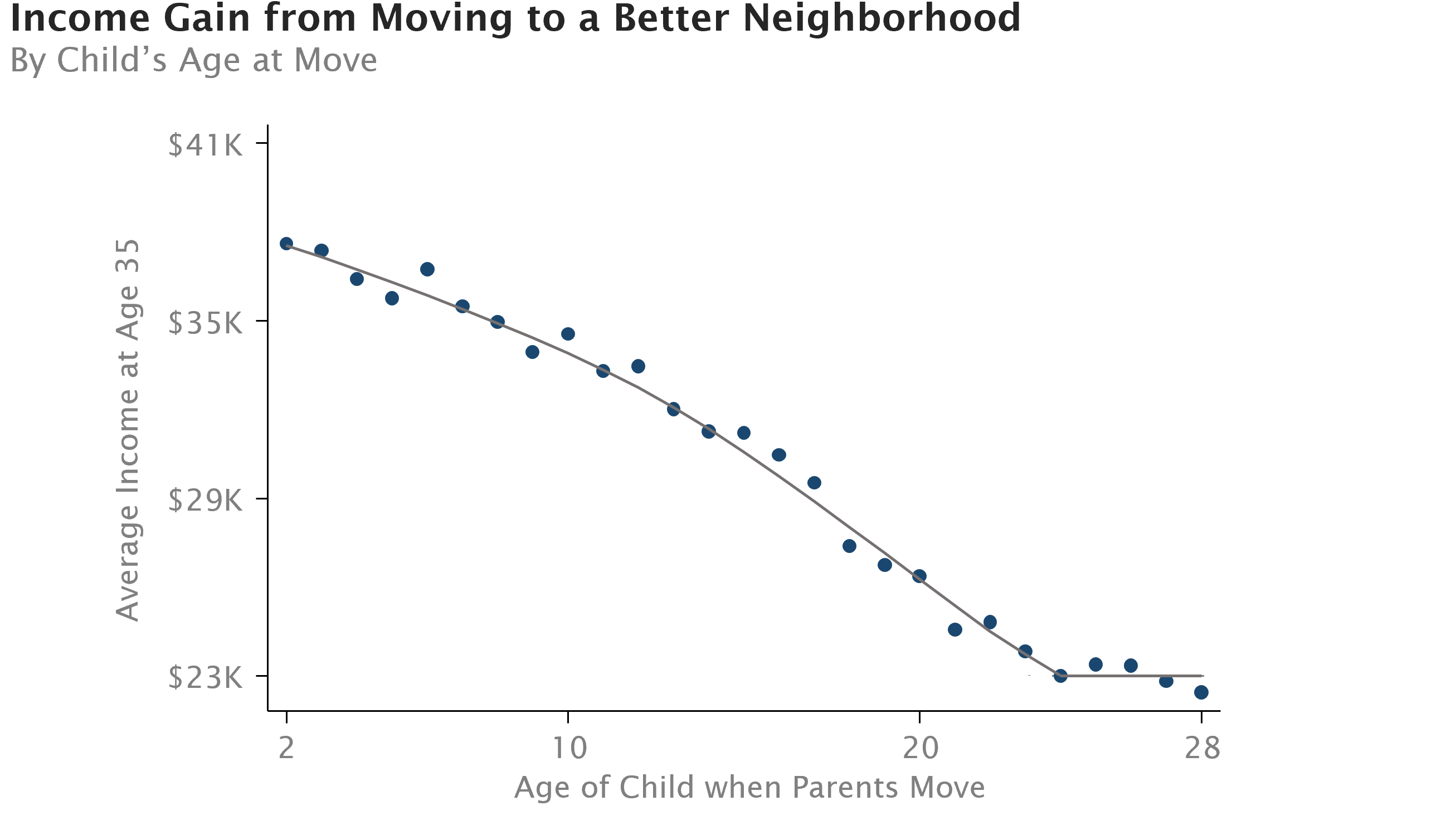
Tucked away in the federal spending bill that kept the government open are appropriations for a program that can dramatically improve the lives of children from low-income families. The bill includes $25 million for the Housing Choice Voucher mobility demonstration program, which will help low-income families that receive rental subsidies from the government move to higher-opportunity neighborhoods.
Studies by Opportunity Insights’ researchers show that low-income children whose families move to better neighborhoods grow up to have higher earnings and more educational attainment than those who stay in lower opportunity areas. These findings hold whether the families moved through the Housing Choice Voucher program or through normal moves in childhood.

However, in many jurisdictions, it is exceedingly difficult for low-income renters to find affordable housing in high-opportunity neighborhoods, even if they are one of the lucky few to receive voucher-based rental subsidies. Recent research by the Center on Budget and Policy Priorities shows that most voucher families with children live in high-poverty neighborhoods.
There is a range of potential reasons why families with vouchers don’t move to high-opportunity places. They may be unfamiliar with these areas, or simply hesitant to leave their current neighborhoods behind. Rental markets are also often more competitive in high-opportunity areas, making it harder to find an affordable unit. Additionally, landlords in these areas may decline to participate in the program due to bias against voucher holders or an unwillingness to deal with the program’s bureaucracy. Recent academic research and on-the-ground reporting show that voucher families are more likely to be denied leases in higher-opportunity areas, and that landlord attitudes play a key role in the program’s implementation.
This is where housing mobility programs come in. Most existing mobility programs provide one-on-one housing search assistance, direct supplemental financial support for costs like security deposits, and/or new landlord recruitment in designated opportunity areas. Some of the most notable mobility programs include the Baltimore Regional Housing Partnership and Dallas’s Inclusive Communities Project. These programs leveraged fair housing lawsuits to fund mobility programs that have successfully helped families moved to lower-poverty neighborhoods.
However, there is range of open research questions around what components of these mobility services are most effective. Our team is currently exploring these questions through the Creating Moves to Opportunity project, specifically via a randomized evaluation of the Seattle and King County housing authorities’ mobility program. This pilot uniquely leverages data from our Opportunity Atlas to specifically target moves to neighborhoods with demonstrated high rates of economic mobility. The results from this study may be able to help inform the new mobility programs funded through the demonstration bill.
Of course, housing mobility isn’t the answer for every family, and cannot close gaps in upward mobility that we see across the country. We need similar investments in low-opportunity neighborhoods to ensure that the American dream is available to everyone regardless of their zip code. But given the U.S.’s long history of purposefully exclusionary and discriminatory housing policy, this $25 million investment in housing mobility is a welcome step to both address past injustices and reduce intergenerational poverty.